
Forklift classes can get complicated, whether you have been working in the material handling industry your entire life or as a novice forklift operator. We created this guide to help you decide which forklift class is most important for your business or application.
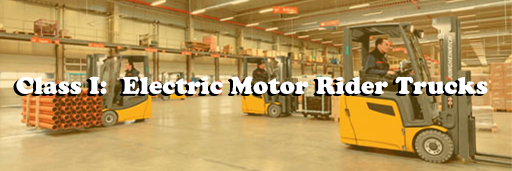
Class I forklifts have electric motors and allow operators to operate them while standing or sitting. They use a heavy battery as their primary power source, which also serves as the counterbalance for the lift truck.
With options for either cushion or pneumatic tires, these trucks are highly versatile for any application. Pneumatic-tire models are intended for applications with uneven surfaces, like gravel, while cushion-tired trucks are best suited for flat, indoor surfaces like warehouses or large retail stores. Some benefits include being quieter, reduced fuel costs, usage in strict air quality applications, and lower maintenance costs.
Class I forklifts include CAT counterbalanced forklifts, Mitsubishi counterbalanced forklifts, and Junheinrich counterbalanced forklifts.
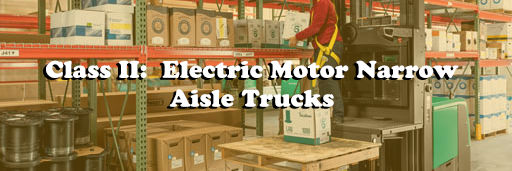
Class II forklifts have solid, cushion tires and are engineered specifically for smaller, indoor work environments. Several of these forklifts perform a specific job, designed with specific attachments.
The concept behind Class II forklifts is to increase the efficiency of space and speed of operation. Such forklifts include side loaders, order pickers, turret trucks, and reach trucks.
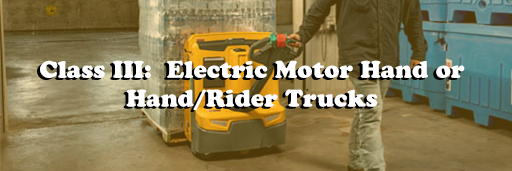
Class III forklifts, such as Mitsubishi walkies and Jungheinrich stackers, effectively transport products in the warehouse or retail stores at low lifting heights, either out of trailers to low-level racking or out to the retail floor.
These electric hand trucks are commonly used in applications that don’t require long distances or high lifting heights such as stores, small warehouses, or loading/unloading small trailers. Class III forklifts are controlled by a handle located in the back of the truck, hence being called an electric motor hand truck. The handle controls the speed, steering, and lifting.
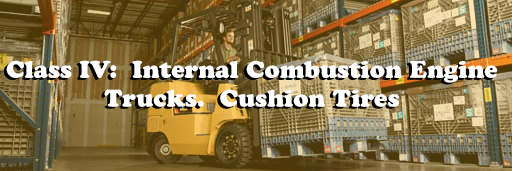
Class IV forklifts are commonly used to move goods from loading docks to elevated storage areas. They can be used outdoors but are favored in indoor warehouses due to their adverse traction on wet or uneven surfaces. Also, they are lower to the ground than most forklifts, providing a lower clearance.
Class IV forklifts operate on diesel, gasoline, LP gas or compressed natural gas. This class of forklifts is specific for equipment with cushion tires, which are designed to be driven on dry, smooth surfaces. Class IV forklifts include internal combustion, cushion tire CAT forklifts and Mitsubishi forklifts.
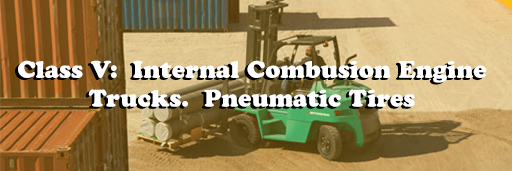
Just like the forklifts in Class IV, these lift trucks use the same type of fuel but they utilize pneumatic tires and have a wider range usage. Class V forklifts include internal combustion, pneumatic tire CAT forklifts and Mitsubishi forklifts.
Pneumatic tires are designed for rugged applications, thus allowing it to be used on uneven surfaces like gravel, but they can also be used in indoor applications as well. They can be outfitted with special solid tires that reduce the chance of punctures. Class V forklifts are commonly used in outdoor applications like lumber yards, metal fabrication, stone yards, and industrial machinery.
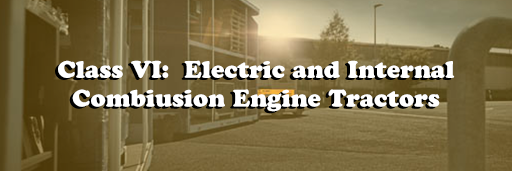
Particularly designed for pulling rather than lifting, Class VI forklifts are normally called “Tuggers.” Commonly used at airports, lugging baggage carts between terminals and planes, these lift trucks come in both internal combustion and electric choices.
An example of the Class VI forklift is the Jungheinrich EZS 720NA tow tractor.
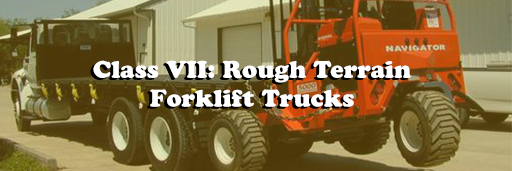
Class VII forklift trucks are heavy-duty and typically have large tractor-like tires. These trucks are commonly used on applications that require additional power on rough terrains, like lumber yards or construction sites. This class of forklifts exclusively run on diesel and come in two and four-wheel drive options.
Also, they can have different types of masts, including a telescoping mast to give more reach. Other options for this class can be mounted on the back of large trucks and hauled between job sites.
Class VII rough-terrain forklifts examples include:
Do you have questions about what class of forklift would best fit your application? Give us a call at (855)-662-4379.